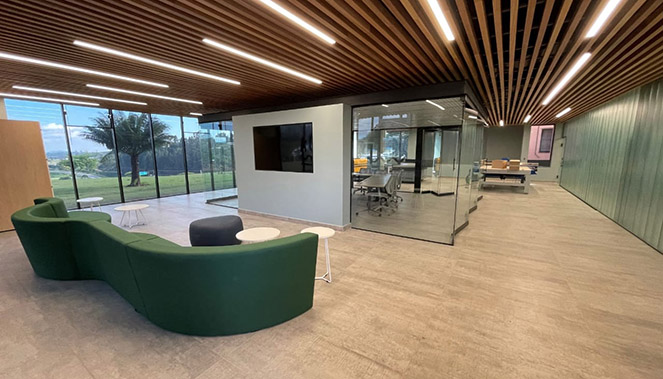Multiple uses of wood
Tall Oil (CTO)/ Tall oil: crude tall oil or simply tall oil is a raw vegetable oil (crude) – unrefined – produced after the acidulation of the black liquor soap (pine extractive) present in the chemical recovery process of the pulp and paper industries. Because it is a renewable forest-based oil, this ingredient can replace other petroleum bases, making its applications more sustainable.
SEE GLOSSARYBio-oil: a black liquid obtained through the pyrolysis process, in which biomass is subjected to high temperatures in an isolated environment with little or no oxygen. It is mainly used as a fuel for heating and the generation of electrical energy.
SEE GLOSSARYSee indicators related to the Multiple uses of wood material topic in the ESG Panel.
Advances in barrier development
The search for natural and biodegradable barriers – to water, grease, steam and oxygen, for example – represents one of the main research fronts at Klabin and adds even more functionality to paper and paper packaging. Paper presents characteristics such as mechanical strength and surface quality, and the development of functional barriers expands the use of a sustainable material, in line with the growing demands of the market and society.
In 2021, several tests were conducted at the Monte Alegre Unit on the application of a barrier on paperboard, reinforcing opportunities to expand the company's portfolio, based on the microfibrillated cellulose (MFC) pilot-plant. Industrial tests were also performed for the development of new papers and boards, with properties different from those currently offered in the market.
Highlights on new products
Customer focus
Circular economy: concept that associates economic development with a better use of natural resources, which are no longer only exploited and/or discarded, but reused in a new cycle. Thus, everything that is extracted from nature is reintegrated into the ecosystem without generating liabilities.
SEE GLOSSARYLow-carbon technologies: consist of processes, equipment, systems, and resources that aim to reduce the emission of greenhouse gases, such as carbon dioxide (CO2).
SEE GLOSSARYIn 2021, the Company consolidated the processes and methodology of the new business and new products area. Based on immersion studies about customers' problems regarding the ideal packaging for their products, short, medium, and long-term challenges were established and solutions were developed that were in tune with their needs and capable of differentiating them in the market.
The delivery involves not only the prototype, but the product concept as well, always applicable to the market, and everything behind the packaging (CO2 balance, biodegradability, among other attributes). After the prototype, industrial tests are performed and the packaging's acceptance in the market is evaluated – focusing on Klabin's customer's customer.

Packaging Technology Center
Reinforcing its partnership with customers through product co-creation processes, the Company invested in the creation of the Packaging Technology Center, an experience center located at the Jundiaí Tijuco Preto Unit (SP). The location, open to all areas of Klabin, has a co-creation room, a videoconference room, equipment for developing prototypes, and a product showroom. The inauguration is scheduled for the second half of 2022.
Packaging is cool
Under the title “Packaging is cool”, a movement that seeks to develop sustainable packaging, Klabin promoted a program that involved several of its areas and customers in order to develop innovative solutions based on paper, a renewable, biodegradable, and recyclable material, in yet another co-creation process. In 2021, there were 16 editions of “Packaging is cool”, all virtual.
Packaging originated from co-creation

The new packaging for Vedacit, a waterproofing additive for concrete and mortar, developed throughout 2021 and launched in January 2022, substantially reduces the amount of plastic material and adds sustainability attributes, such as the reduction of CO2 emissions, waste generation, and energy consumption in production. Made of corrugated board, it is strong enough to be stacked; the support of handles makes it easy to carry.
Other product originated from co-creation is the recyclable and biodegradable packaging developed in corrugated board exclusively for Tibii, an animal nutrition company, gained Braille printing. The technology, a pioneer for this type of printing, was developed by Klabin, with validation by the Brazilian Association for Assistance to the Visually Impaired (Laramara).
More information in Recognition and Awards.







